#bernard picart
Explore tagged Tumblr posts
Text

Atlas Supports the Heavens on his Shoulders by Bernard Picart
#bernard picart#art#atlas#greek mythology#heavens#sky#heaven#stars#titan#titans#titanomachy#celestial#earth#world#sun#moon#astronomy#mountains#ancient greece#ancient greek#europe#european#religion#religious#mythology#mythological
631 notes
·
View notes
Text

Kniender männlicher Akt, aus einer Schale trinkend, 1723, Bernard Picart
267 notes
·
View notes
Photo

Bernard Picart - Self-Portrait
9 notes
·
View notes
Text

The Fall of Icarus (Copy after a plate by Bernard Picart, 1730)
27 notes
·
View notes
Text
I've been seeing a lot of people creating one of these so I decided to create one myself. I hope you guys like it
*
*
*
*
*
#MySpace#profile#share#bernard picart#trends#tumblr milestone#artists on tumblr#scenecore#emo as hell#alternative
0 notes
Text








AEGON, ICARUS & THE SUN; ANYTHING WORTH DOING IS WORTH DOING BADLY
house of the dragon s02e04 "the red dragon and the gold" / nicole dollanganger – dogwood / carl von marr – der sinkende tag / andrea gibson – the madness vase / bernard picart – la chute d'icarus / herbert james draper – the lament for icarus / lord byron – to the countess of blessington / yves olade – when rome falls / vlaho bukovac – we'll fly despite everything: icarus on the rocks / george r. r. martin – a clash of kings / house of the dragon s02e03 "the burning mill" / jack gilbert – failing and flying
#aegon ii targaryen#house of the dragon#web weaving#welighttheway#i love you more than words can say!#parallels#icarus#on failing#hotd#asoiaf#ales.txt#aegonposting
453 notes
·
View notes
Text
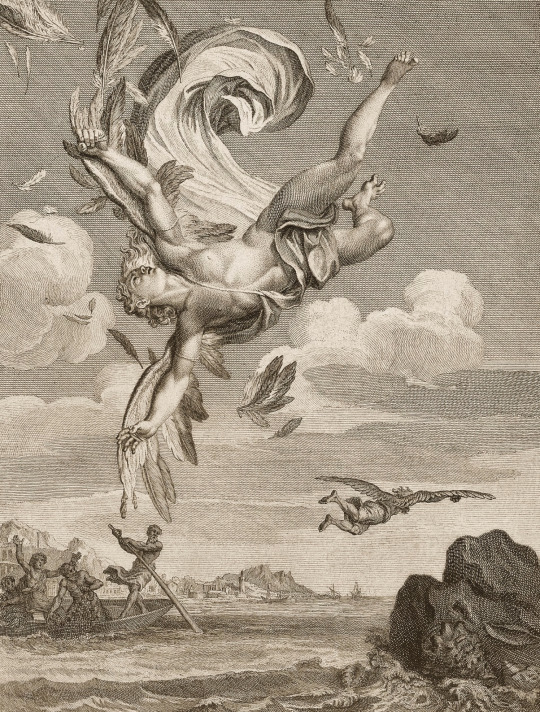
The Fall of Icarus. 1731. Bernard Picart French 1673-1733. engraving. http://hadrian6.tumblr.com
844 notes
·
View notes
Text


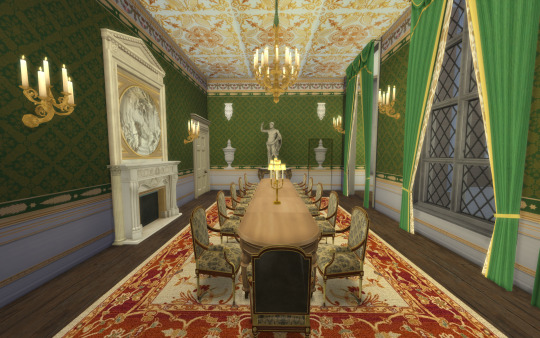

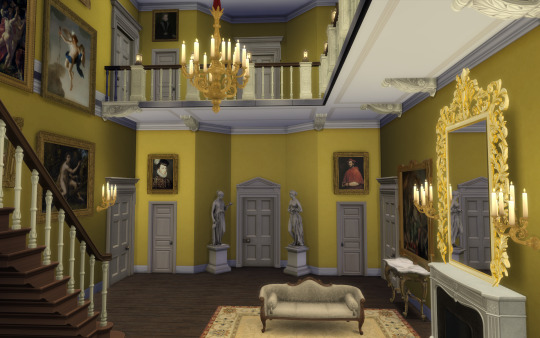

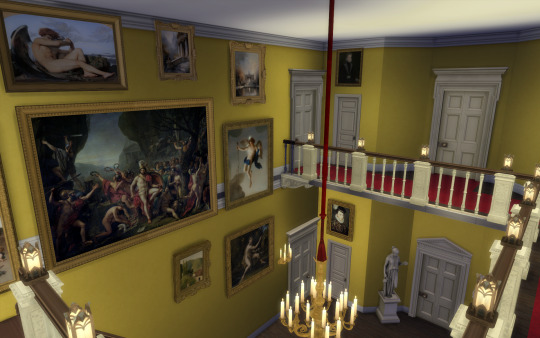

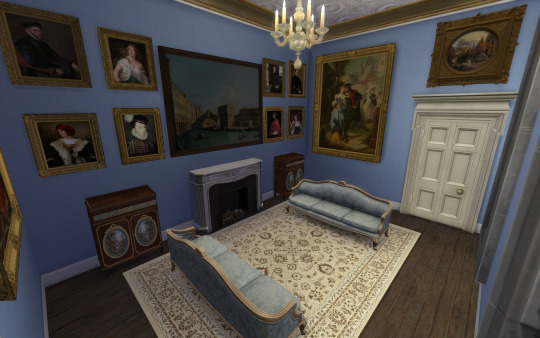

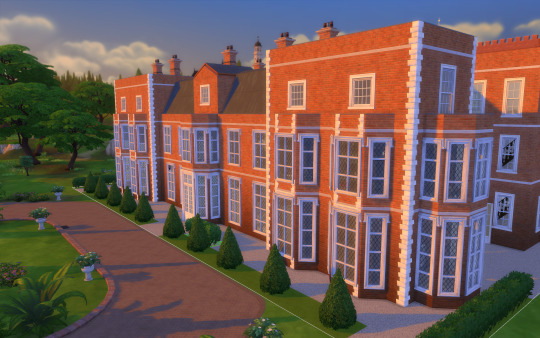


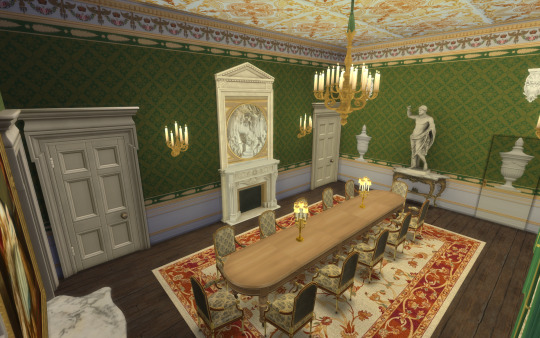
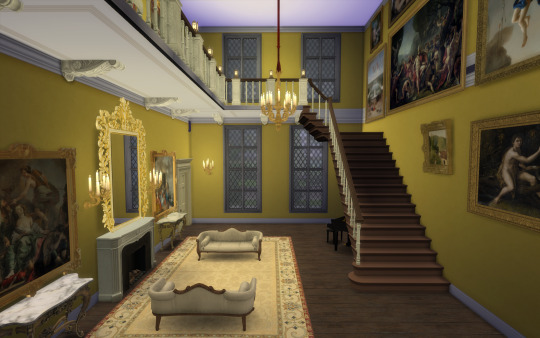
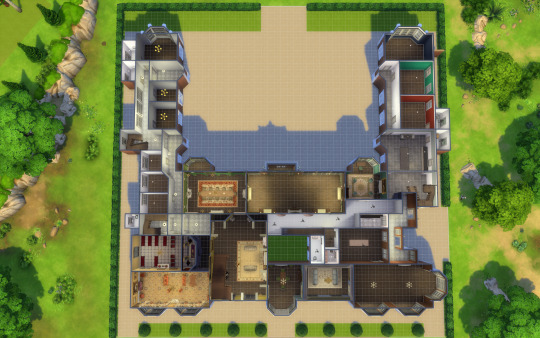
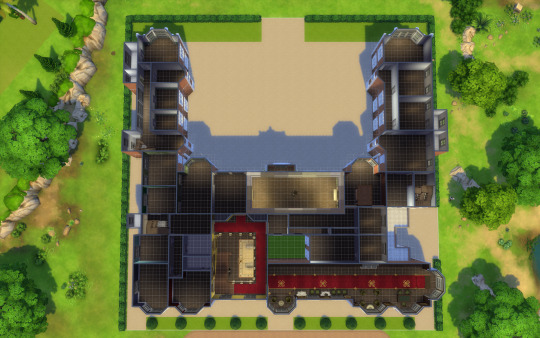
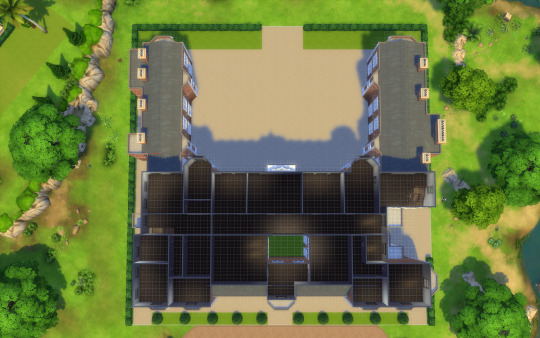
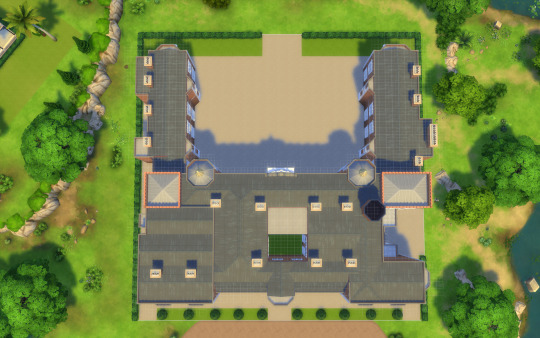

Burton Constable Hall
Hi guys!!
I'm sharing Burton Constable Hall. This is the 19th building for my English Collection.
I decorated most of the house ground floor, for reference.
History of the house: Burton Constable Hall is a large Elizabethan country house in England, with 18th- and 19th-century interiors.
Despite its apparent uniformity of style, Burton Constable has a long and complicated building history. The lower part of the north tower, built from limestone, is the oldest part of the house to survive and dates to the 12th century, when a medieval pele tower served to protect the village of Burton Constable from the time of the reign of King Stephen. In the late 15th century a new brick manor house was built at Burton Constable, eventually replacing Halsham as the family's principal seat. In the 1560s Sir John Constable embarked on the building of the Elizabethan prodigy house that stands today. This incorporated remains of the earlier manor house along with the addition of the new range containing a Great Hall, which rose the full height of the building and was top-lit by a lantern, along with a Parlour, Chambers and South Wing.
By the 18th century, the Great Hall must have seemed old fashioned, and a surviving design of c. 1730 suggests that Cuthbert Constable intended to completely remodel the interior. However, it appears that remodelling was not undertaken until the 1760s when his son William Constable commissioned a number of architects for designs. These included John Carr, Timothy Lightoler and Capability Brown. The decorative plasterwork was executed by James Henderson of York. At this time, Constable also acquired the plaster figures of Demosthenes and Hercules with Cerberus, and plaster busts of the Roman emperor Marcus Aurelius Antoninus and the Greek poet Sappho, from the sculptor John Cheere. Above the fireplace is a carving of oak boughs and garlands of laurel leaves, crowned by the Garter Star, surrounding the armorial shield of the Constable family in scagliola by Domenico Bartoli.
The dining room was substantially remodelled by William Constable in the 1760s, who commissioned designs from Robert Adam, Thomas Atkinson, and Timothy Lightoler (who won the commission). The ceiling draws on contemporary interest in the excavations at Pompeii and Herculaneum, with plasterwork by Giuseppe Cortese. The overmantel plaque of Bacchus and Ariadne riding on a panther was modelled on famous antique cameos illustrated in Pierres Antiques Gravées, published 1724 by Philip, Baron von Stosch and Bernard Picart. This room was again redecorated in the 19th century.
Link: https://en.wikipedia.org/wiki/Burton_Constable_Hall
------------------------------------------------------------------------------
This house fits a 50x50 lot.
I only decorated some of the important rooms. All the rest of the house is up to your taste to decor.
Hope you like it.
You will need the usual CC I use:
all Felixandre cc
all The Jim
SYB
Anachrosims
Regal Sims
King Falcon railing
The Golden Sanctuary
Cliffou
Dndr recolors
Harrie cc
Tuds
Lili's palace cc
Please enjoy, comment if you like the house and share pictures of your game!
Follow me on IG: https://www.instagram.com/sims4palaces/
@sims4palaces
Download: https://www.patreon.com/posts/112319879
Public: 21/10/2024
#sims 4 architecture#sims 4 build#sims4#sims 4 screenshots#sims4building#sims 4 historical#sims4play#sims4palace#sims 4 royalty#ts4#ts4 download#ts4 simblr#ts4 gameplay#ts4 screenshots#sims 4#the sims 4#sims#simblr#sims 4 gameplay#my sims#the sims#sims build#sims 4 simblr
81 notes
·
View notes
Text

After Antoine Coypel, 18th Century
Leda and the Swan, n/d, oil on canvas, 130.5x103.2 cm
Private Collection
The present composition is after the original by Coypel, location unknown, but known from an engraving by Bernard Picart in the Bibliothèque National, Paris and a preparatory drawing for the original in the Ashmoleum Museum, Oxford. (Bonhams)
48 notes
·
View notes
Text


The Muse Calliope ~ also seen as The Muse Terpsichore ~ circa 1652 ~ painting by Eustache Le Sueur (1616-1655) ~ and later, etching by Bernard Picart (1673-1733)
15 notes
·
View notes
Note
Hi! I’m Sephardic, specifically the kind that was from Portugal and then went to Amsterdam around 1493. I went through your blog but didn’t see anything from this community specifically. Do you have any photos of them? I have one thing from that side of the family, a small gold hamsa with a tiny green emerald in the middle from my grandmother and it was her grandmother’s. But would love to learn more. Thanks so much for all you do!
In the late 15th century, Spain and Portugal expelled their large Jewish population and many Jews found refuge in the Balkans and North Africa. However, as the political situation across Europe shifted, new opportunities for Jewish settlement materialized, particularly Holland, which emerged from the 80 year Wars of Spanish Succession as an independent nation in 1648.
Article XIII of the Treaty of Utrecht, which ratified the union of the northern provinces, declared that no one was to be prosecuted for his religious beliefs. This clause provided the legal basis upon which Jews immediately began to take up residence and seek recognition in Holland. In 1604 a certain Manuel Rodrigues de Vega petitioned the city’s burgomasters to be allowed to establish silk mills there along with two other Portuguese Jews. Eventually, Sephardic poets, dramatists, calligraphers and copper-etchers would also be found alongside the customary merchants, bankers, and physicians.
Many Dutch intellectuals became fascinated with the somewhat exotic inhabitants of the Jewish quarter and sought them out for conversation. Conversely, the Sephardic Jews reaped the benefits of the lively intellectual life created by Amsterdam’s savants, who eagerly cultivated theology, philosophy, jurisprudence, mathematics and oriental languages.

This is a photo of the old Portuguese synagogue in Amsterdam.
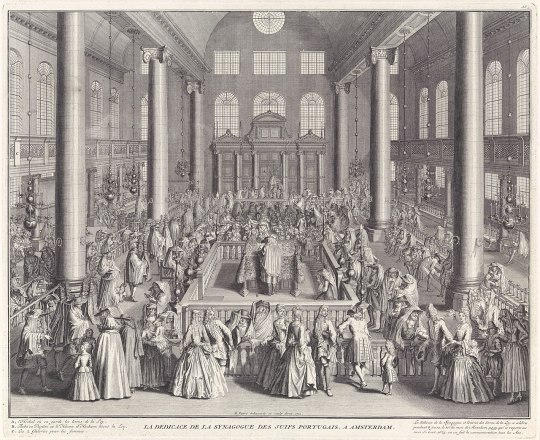
This lithograph by Bernard Picart shows its inauguration in 1675.
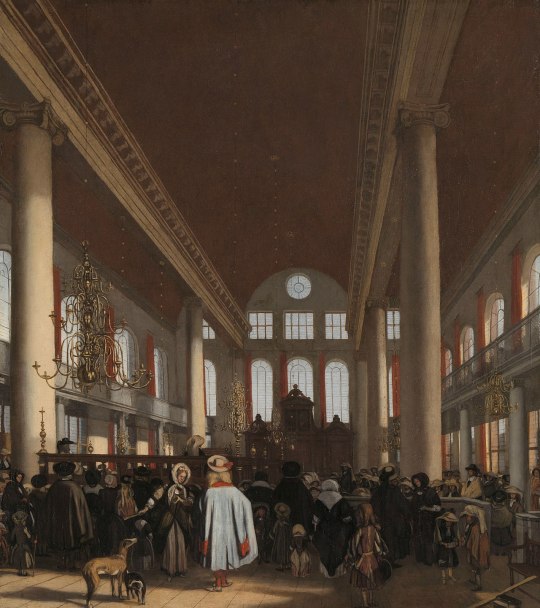
The painting of Emanuel de Witte depicts the interior of the synagogue in 1680. The Amsterdam Sephardic community was one of the largest and richest Jewish communities in Europe during the Dutch Golden Age, and their very large synagogue reflected this. The synagogue remains an active place of worship and is also a popular tourist attraction.
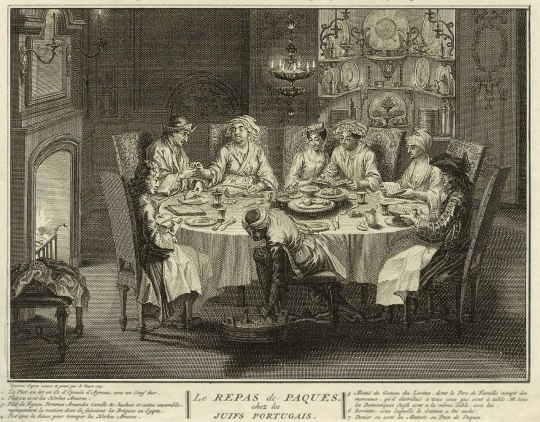
This is, again by Picart, a depiction of the Passover Seder of the Portuguese Jews of Amsterdam.
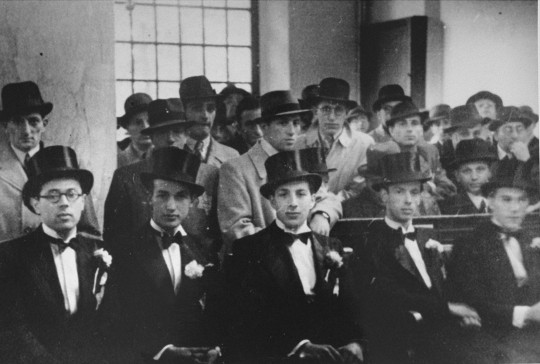
These are male attendants at a Sephardic wedding in Amsterdam in 1942, shortly before the German occupiers murdered most of the community.
73 notes
·
View notes
Text
Black Andromeda😗💗

Perseus Delivers Andromeda from the Sea Monster, 1731) Bernard Picart
#fy#ancient greek mythology#greek myths#greek mythology#perseus#andromeda#perseus and andromeda#i love art#black beauty
4 notes
·
View notes
Text

The Fall of Icarus (detail) from the workshop of Bernard Picart, 1731.
4 notes
·
View notes
Text

Ezekiel’s Vision Bernard Picart, 1693 – 1783.
Ezekiel describes in great detail and awe what occurred:
“In the thirtieth year, on the fifth day of the fourth month, when I was in the community of exiles by the Chebar Canal, the heavens opened, and I saw visions of God…[Ezek 1:4]
I looked, and lo, a stormy wind came sweeping out of the north—a huge cloud and flashing fire, surrounded by a radiance; and in the center of it, in the center of the fire, a gleam as of amber…”
15 notes
·
View notes
Text
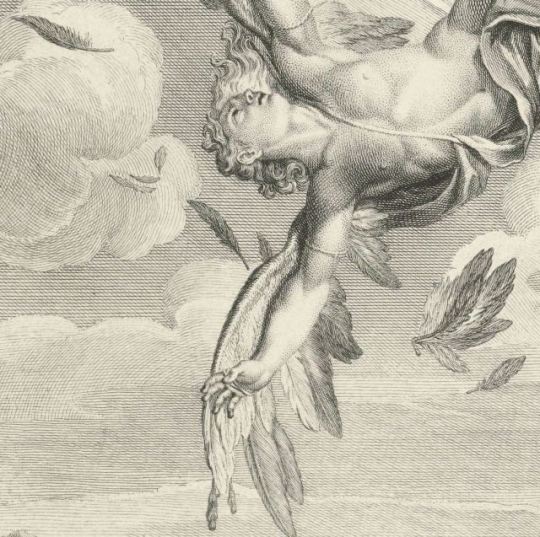
The fall of Icarus (detail) from the workshop of Bernard Picart, 1731
16 notes
·
View notes
Text


Etude d'hommes en habit by Bernard Picart
Looks familiar :)
3 notes
·
View notes